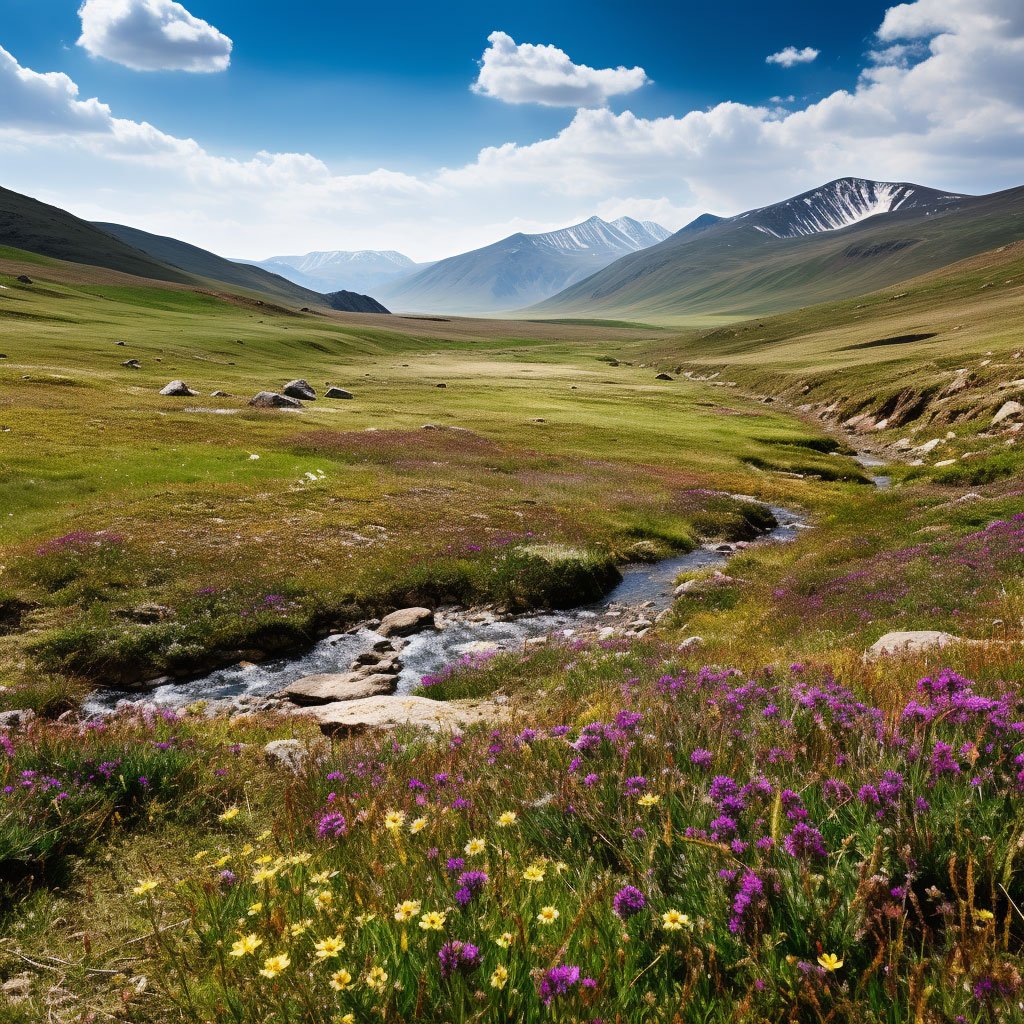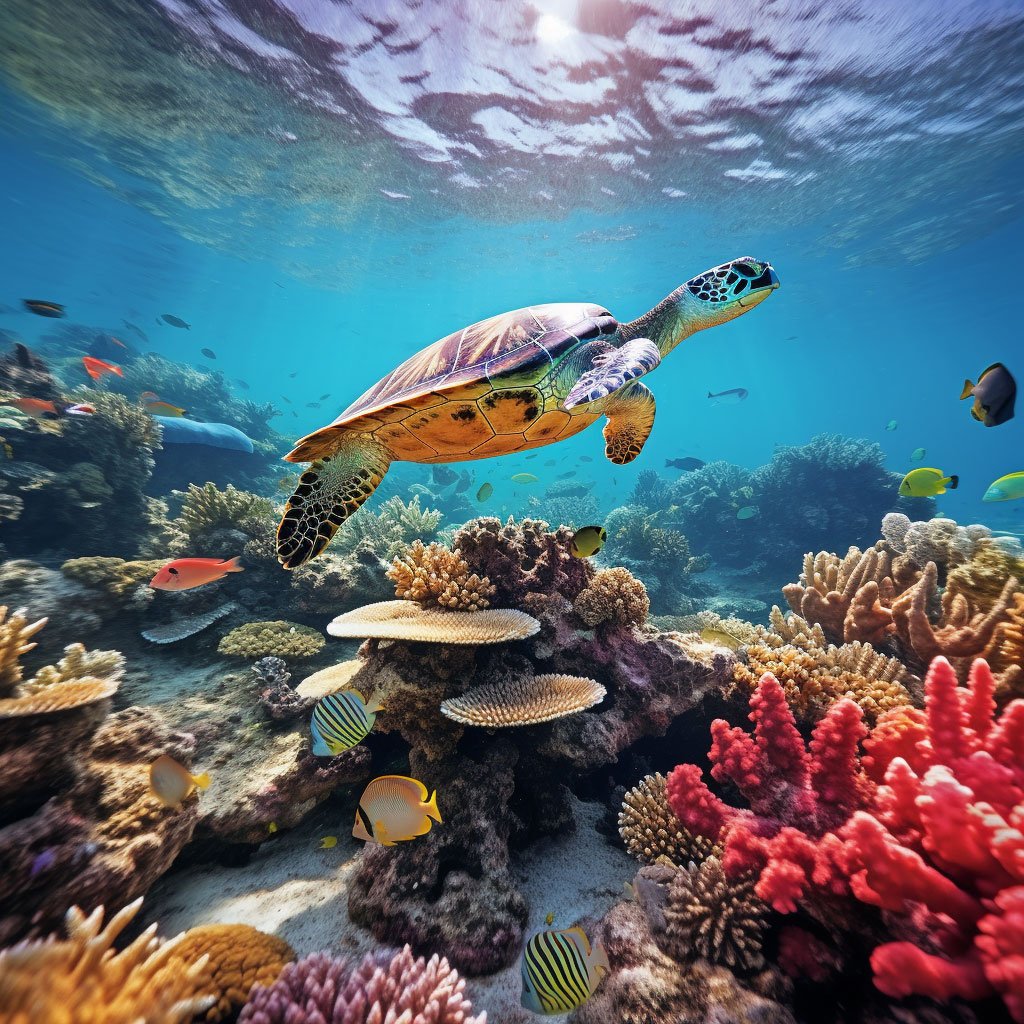Blessed with towering mountains, lush forests, fertile plains, and serene beaches, Pakistan is a country rich in natural beauty and ecological diversity. From the snow-clad peaks of K2 to the balmy beaches of the Arabian Sea, the geographical diversity creates a host of unique habitats. This article invites you on a journey through the breathtaking landscapes, the extraordinary wildlife, and the remarkable biodiversity found in Pakistan’s various national parks and marine life.

Deosai National Park: The High-Altitude Haven
Situated in northern Pakistan, the Deosai National Park offers an awe-inspiring start to this journey. Known as the ‘Land of the Giants,’ Deosai is a sprawling high-altitude plateau that stands at an average elevation of 4,114 meters above sea level.
The park is a sanctuary for a variety of wildlife species. Most noteworthy is the Himalayan brown bear, an endangered species that has found a haven here due to extensive conservation efforts. Deosai’s landscape comes alive with movement as wolves, red foxes, snow leopards, and a plethora of bird species coexist in this serene wilderness.

From the short yet vibrant bloom of wildflowers that carpet the plains in summer to the sight of a Himalayan brown bear ambling along in the distance, Deosai offers its visitors a chance to witness the magic of nature, raw and undisturbed.
Khunjerab National Park: The Kingdom of the Snow Leopard
Embarking further into our adventure, we journey to Khunjerab National Park, a refuge nestled in the formidable Karakoram Range. Known as Pakistan’s third largest national park, Khunjerab paints a different picture of biodiversity compared to Deosai, reflecting the harsher conditions and rugged landscapes of the Karakoram.

The star attraction here is undoubtedly the elusive snow leopard, one of the world’s most enigmatic big cats. Catching sight of this majestic creature prowling the jagged peaks is an unforgettable experience. But there’s more to Khunjerab than just its famous feline. The park is home to a host of unique species, such as the Marco Polo sheep, Himalayan ibex, and Tibetan red fox, each one a testament to the marvels of adaptation in the wild.
Into the Wild: Chitral Gol National Park
As we move on from the snow-dusted peaks of Khunjerab, the landscape changes yet again, ushering us into the verdant realm of Chitral Gol National Park. Nestled in the Hindu Kush range in the Khyber-Pakhtunkhwa province, this park is renowned for its population of Markhor, a species of wild goat known for its distinctive spiraled horns. Alongside the Markhor, other inhabitants like the Asian black bear, snow leopard, and Afghan pika thrive amidst the alpine scenery.

Astola Island: The Underwater Wonderland
From the rugged heights of the northern mountains, our journey takes us south to the balmy Arabian Sea where Astola Island, Pakistan’s largest offshore island, is located. Known as ‘Jezira Haft Talar’ or ‘Island of the Seven Hills,’ Astola offers an exquisite juxtaposition of sandy beaches, rocky outcrops, and rich marine life.

Below the water’s surface lies an underwater paradise. The vibrant coral reefs that encircle the island are teeming with various species of marine life, including green turtles, lobsters, and an array of colorful fish. The island’s secluded beaches also serve as crucial nesting sites for endangered green and olive ridley turtles.
Exploring the Mangroves: Indus River Delta
As we further explore the marine treasures of Pakistan, we find ourselves amidst the intricate labyrinth of creeks and channels that make up the Indus River Delta. This verdant sanctuary of mangroves, home to the elusive Indus river dolphin, stands as a testament to the resilience of nature, adapting to the ebb and flow of the sea and river.

Flocks of migratory birds find a haven here during winters, making it an ideal location for bird watching. The Indus River Delta is also home to numerous fish species, mollusks, and crustaceans that find refuge within its tangled roots.
Hingol National Park: A Desert Enigma
Our next destination takes us to the largest National Park in Pakistan, Hingol, located in the Makran coastal region. Though it may seem stark and inhospitable, the arid expanses of Hingol are teeming with life. The park houses more than 35 species of mammals, including the rare Balochistan bear and the Sindh ibex. Its coastline is a vital nesting ground for green and olive ridley turtles, while its skies are patrolled by over 165 species of birds, a testament to the park’s biodiversity.

Margalla Hills National Park: Urban Jungle
From the wilderness, we move towards urban landscapes, arriving in Islamabad, Pakistan’s capital. Despite its metropolitan status, Islamabad coexists with the Margalla Hills National Park, a green haven nestled within the city’s boundaries.

This urban wildlife sanctuary serves as an important conservation area for many species, the most famous of which is the leopards. The park is also home to diverse bird species, with over 250 recorded varieties, making it a bird watcher’s paradise.
Lal Suhanra National Park: A Conservation Success
Located near the historical city of Bahawalpur, Lal Suhanra is one of the largest national parks in South Asia. Once a royal game reserve, the park is now a significant biodiversity hotspot and a testament to successful wildlife conservation.

The park is home to a variety of ecosystems, ranging from desert to forest, and even includes a artificial wetland that attracts migratory birds from as far as Siberia. Its main attraction, however, is its captive herd of Blackbucks, an antelope species that was once widespread across the Indian subcontinent but is now endangered.
Reflection: Pakistan’s Rich Wildlife and Its Preservation
Pakistan’s stunning array of national parks and conservation areas highlights the nation’s commitment to biodiversity conservation. The existence of such varied species within its borders makes Pakistan a fascinating destination for wildlife enthusiasts and conservationists alike.
However, this rich biodiversity also underscores the need for continued conservation efforts. Habitat degradation, poaching, and climate change continue to threaten Pakistan’s unique wildlife. Through sustainable tourism practices, awareness, and education, we can all play a role in ensuring that these incredible species and their habitats survive for future generations to admire and study.
Pakistan’s wildlife journey is a reflection of its broader narrative – a diverse, resilient, and dynamic country that continually adapts and thrives amid challenges. From the highest peaks of the north to the coastal expanses of the south, the wildlife of Pakistan is as rich and diverse as its people and culture.
Conclusion
With this, we conclude our journey through the breathtaking landscapes, extraordinary wildlife, and remarkable biodiversity found in Pakistan’s various national parks and marine life. This journey is a glimpse into the country’s commitment to conserve and highlight its natural heritage. As we strive for coexistence, may the stories and images of these natural wonders serve as a reminder of the beauty and resilience of life on our planet.
